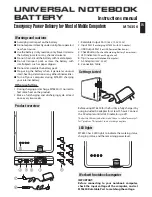
7-2
Rev 2.2, 10/31/94
The Delay block uses two delay lines (one per channel) with their recirculation paths
cross-coupled. The feedback signal may be polarity-inverted and the delay time may be
controlled by an internal modulation oscillator or the front panel.
Many of the 601’s parameters have a rate-of-change parameter associated with them. This
parameter determines how quickly the 601 responds to a step-change in the value of the
parameter. This parameter ranges from 100 microseconds to 10 seconds. A 10 second rate-of-
change setting makes the 601 change from the old value to the new value over a period of 10
seconds.
7.2.1 Stand-alone Operation
A vast majority of users use the 601 as a stand-alone device. Here the 601 replaces their usual
microphone preamp and either feeds their tape machine or workstation directly, in essence
becoming a one-input, one-output console. If you are using the digital outputs of the 601, be
sure to read sections 7.3.4. and 7.3.5.
If you are using the analog outputs, ensure that they are
plugged into a line-level input (+4 dBu nominal level). If
you have to plug the 601 into a microphone input (-40
dBu nominal level), then you'll need to pad (attenuate) the
output of the 601 down to microphone level. A simple U
pad is sufficient. A suitable design can be found in Figure
7-1. Although a far preferable connection would be to
bypass your console or mixer's mic preamp, this will
work. Ensure that there is no phantom power present at
the console's mic input terminals (both sides of the mic
input should read 0V dc referenced to ground).
Note
: Padding (attenuating) the output of the 601 back to microphone level is a workable
solution towards interfacing the 601 into a console or system having only microphone level
inputs. However workable, the ultimate performance of the 601 will be limited by the
performance of your system's existing microphone preamps. If you can find a way to bypass the
existing microphone preamps in your system, do so. It'll be worth the trouble.
FROM BALANCED OUT
FEMALE XLR
PIN 1 = GROUND
PIN 2 = HIGH
PIN 3 = LOW
MALE XLR
PIN 1 = GROUND
PIN 2 = HIGH
PIN 3 = LOW
TO BALANCED IN
3
2
1
3
2
1
12k
150
Ω
12k
Figure 7-1. A 44 dB U pad.
Summary of Contents for 601
Page 46: ...4 18 Rev 2 2 10 31 94 This page is blank believe it or not ...
Page 48: ...4 20 Rev 2 2 10 31 94 Notes ...
Page 50: ...5 2 Rev 2 2 10 31 94 Notes ...
Page 70: ...7 16 Rev 2 2 10 31 94 Notes ...
Page 72: ...8 2 Rev 2 2 10 31 94 Notes ...
Page 74: ...9 2 Rev 2 2 10 31 94 Notes ...
Page 78: ...11 2 Rev 2 2 10 31 94 Notes ...
Page 126: ...D 12 Rev 2 2 10 31 94 Notes ...
Page 138: ...G 8 Rev 2 2 10 31 94 Notes ...
















































